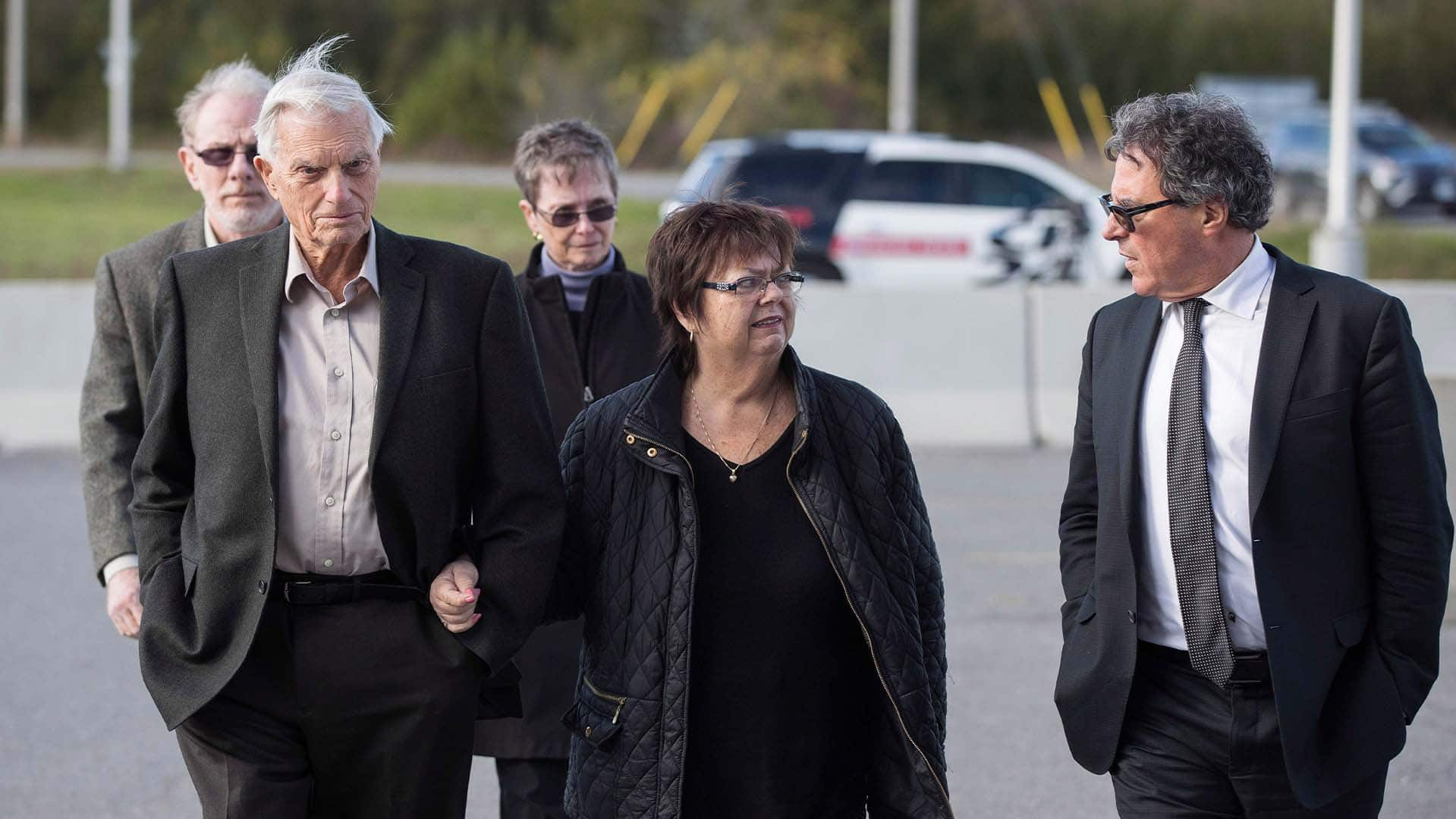Bernardo's transfer to a medium-security prison has many people asking questions

Revelations about who knew what about serial killer and rapist Paul Bernardo's transfer to a medium-security prison have many people questioning how the decision was made.
The subsequent public outcry and calls from the Conservative Party for federal Public Safety Minister Marco Mendicino's resignation have also raised the issue of who has the authority to make decisions about prison transfers — and who has the authority to overturn them.
Here's a look at that process, as well as what life would look like for Bernardo in a medium-security prison.
Who decides where inmates will serve their sentences?
There are generally three levels of prisons in Canada: maximum, medium and minimum security. According to theCorrections and Conditional Release Act, when an inmate enters the system, Correctional Service Canada (CSC) assigns them a security classification based on the severity of the offence, history, physical and mental state and potential for violent behaviour.
The process also takes into account the risk of escape, need for supervision and risk to public safety. A review is required every two years, the CSC said in a statement.

Outrage over Paul Bernardo’s transfer to medium security prison
Canada’s prison service is now reviewing its decision to move notorious serial killer and rapist Paul Bernardo from a maximum-security prison to a medium security facility. The transfer has sparked outrage across Canada’s political landscape. Bernardo is serving a life sentence for the murders of Kristen French and Leslie Mahaffy in the early 1990s.
"We don't have sentences that confine people to maximum security for all of their sentences," said John Conroy, a British Columbia lawyer who wrote the book Canadian Prison Law. "And I would argue that type of a sentence would be counterproductive. It makes people worse if you give them no hope whatsoever."
Inmates look for opportunities to do what's called "cascading down" through the system to gain access to less restrictive environments and more programming, and to demonstrate that they can reintegrate into society.
"The parole board is very interested in your chances of success in the community," said Howard Sapers, a consultant and Canada's former correctional investigator.
"And your chances of success in the community are much greater if you've demonstrated that you're able to cascade down the security ladder and live and survive and be safe in increasingly less restrictive forms of custody."
Conroy said Bernardo, who was incarcerated at Millhaven Institution near Kingston, Ont., would have worked with a parole officer, manager of intervention and case management team to be considered for a transfer.
In addition to the reasons for judgment and victim impact statements, his behaviour in maximum security and any record of disciplinary offences would have been considered. The wardens of both institutions must also agree, he said.
How can a dangerous offender qualify for medium security?
Bernardo, 58, is serving a life sentence after being convicted in 1995 of the kidnapping, aggravated sexual assault and first-degree murder of two teenaged girls, and he was declared a dangerous offender. He's been transferred to La Macaza Institution, a medium-security prison in the Laurentians region of Quebec.
Crown attorneys who seek the designation must prove there is a high risk the individual in question will commit more violence or sexual offences.

A special process governs dangerous offenders who want to move into minimum-security prisons, which are not generally surrounded by fences. The chance of Bernardo being approved for a transfer to a minimum-security prison in the future is slim, Conroy said.
"In the case of a dangerous offender, there are these additional hurdles that a person has to go through before they can reach minimum security," he said.
"So Mr. Bernardo is not going to minimum security any time soon, it having taken some 30 years to get to medium security and bearing in mind the various levels that he will have to … go through in order to progress further."
But dangerous offenders are able to move between maximum- and medium-security prisons without going through the special process, said Shane Martinez, a criminal lawyer and adjunct professor of prison law at York University's Osgoode Hall Law School in Toronto.
"The institutions are largely the same," he said. "They're both prisons, and they're both prisons with a great deal of security."
Both maximum- and medium-security prisons in Canada are surrounded by high walls topped with razor wire. They both have guard towers, armed guards and dogs, Martinez said.
What's life like in medium security?
The main difference for inmates in maximum- and medium-security prisons are changes in day-to-day life, Martinez said. In medium security, prisoners generally have more freedom of movement, access to prison work and educational programming.
But Bernardo's situation is unique, Martinez said, and he will likely be kept in isolation in the medium-security prison.
"It's difficult to imagine that someone of his profile would be released into the general public. The potential consequences from that, the possibility of violence, I think is just too great," he said.
"The likelihood of him experiencing the kind of life that a prisoner would typically experience at a medium-security institution is unlikely. I think he's going to have very much a unique, individual experience there."
Can the decision to transfer Bernardo be reversed?
Correctional Service Canada has already struck a three-person committee to "examine the appropriateness of [Bernardo's] security classification and transfer to a medium-security facility, review victims' considerations and notifications, and whether the legislative and policy framework was followed in this case."
And while Public Safety Minister Marco Mendicino is under fire for not intervening to stop Bernardo's transfer, both Sapers and Martinez agree that political interference would set a dangerous precedent.

Families of Bernardo's victims call for change to prison transfer laws
A lawyer representing the families of Paul Bernardo's victims says they weren't given enough notice about the serial killer's transfer from a maximum security prison to a medium security facility. They have joined advocates who say there is a gap in the law that needs to be amended so victims can be consulted in future transfer cases.
"The Correctional Service of Canada quite properly is independent in exercising its authority according to law," Sapers said.
"We have our system set up so this independence actually protects us all, and it guarantees that we're not going to be interfered with for just political reasons. And I think most Canadians would accept that, at least that principle."
The Bernardo case is still strong in some people's memories, and it can drive their opinions of how he should be treated. But emotions and the law are two very different things, Martinez said.

"Without disrespecting people's emotions, we have to understand that the law works on a different basis," he said. "And we can't make decisions about legal matters on the basis of emotions because we risk making really big mistakes and going in directions that we may end up regretting one day if we start to do that."
Even if Bernardo's transfer to medium security stands, it might not last forever. If he commits a disciplinary offence, for example, he could be shipped back to a maximum-security prison, Conroy said.
"I know some people who've been transferred back because they slept in and didn't get to their program on time," he said.

Could Bernardo's prison transfer cost the public safety minister his job?
The opposition is calling for Public Safety Minister Marco Mendicino's job after his office failed to inform him of serial killer Paul Bernardo's transfer to a medium-security prison. Plus, what's next in the investigation into foreign interference and will there be a public inquiry?
*****
Credit belongs to : www.cbc.ca
 MaharlikaNews | Canada Leading Online Filipino Newspaper Portal The No. 1 most engaged information website for Filipino – Canadian in Canada. MaharlikaNews.com received almost a quarter a million visitors in 2020.
MaharlikaNews | Canada Leading Online Filipino Newspaper Portal The No. 1 most engaged information website for Filipino – Canadian in Canada. MaharlikaNews.com received almost a quarter a million visitors in 2020.







